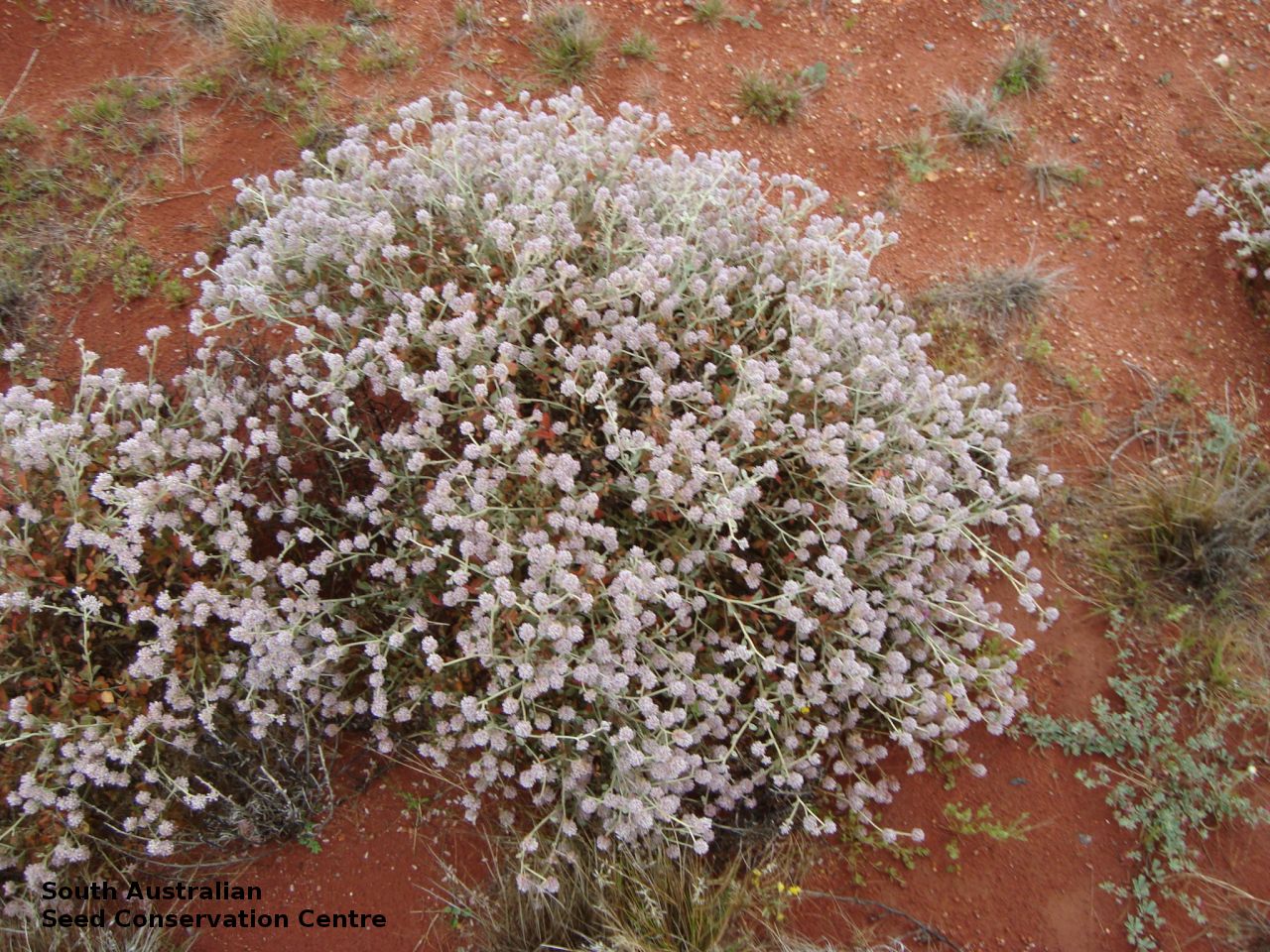
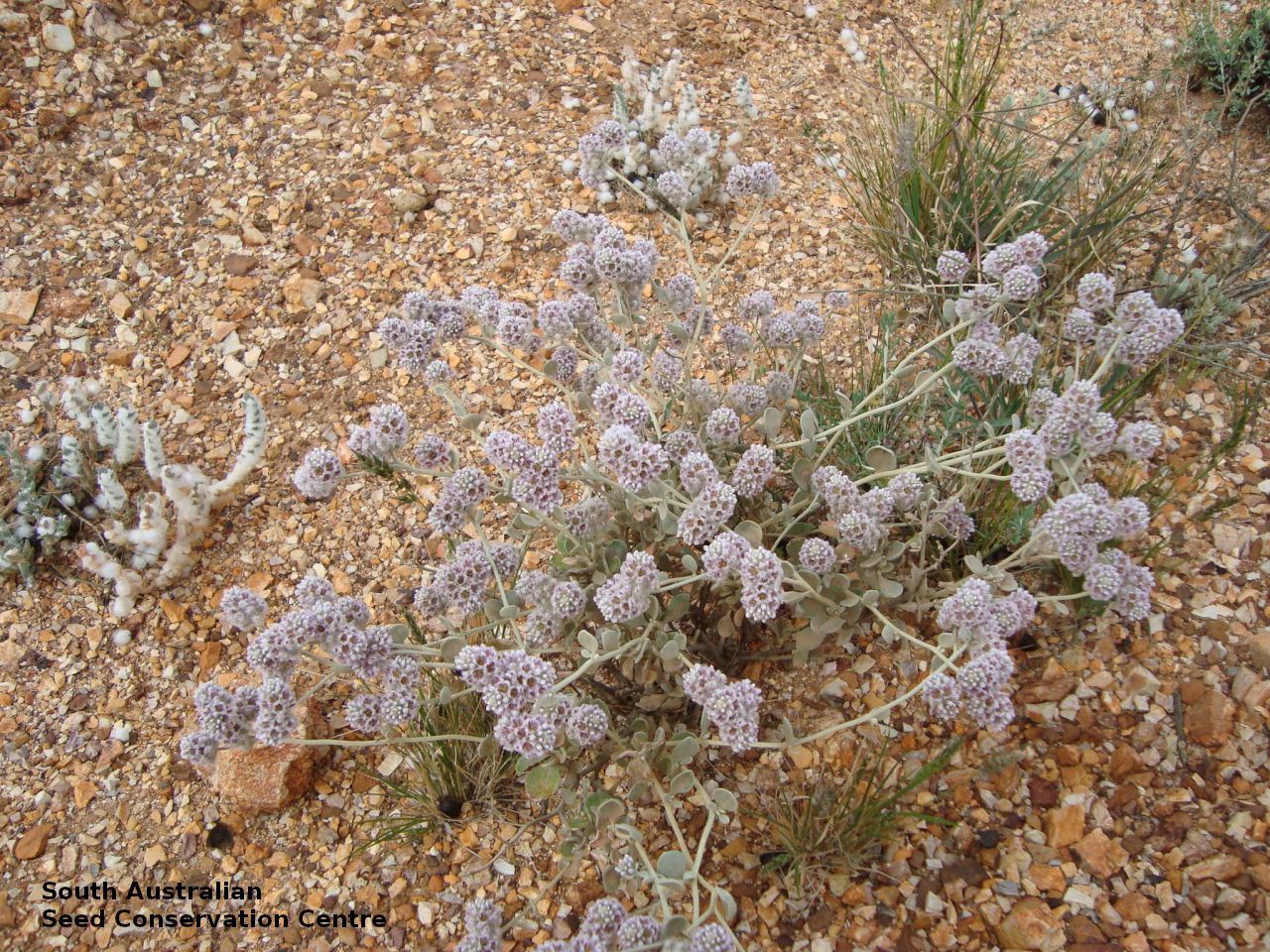
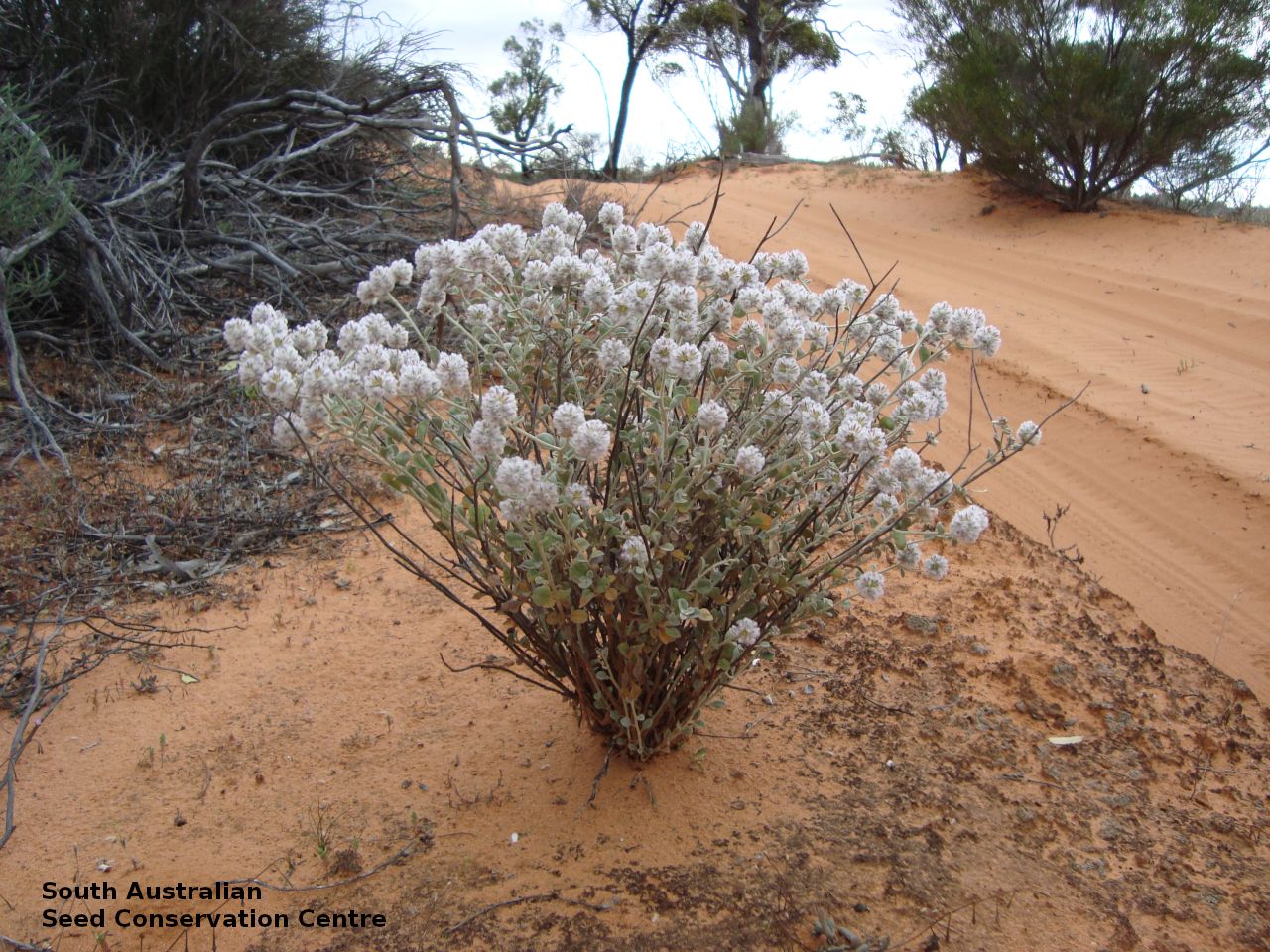
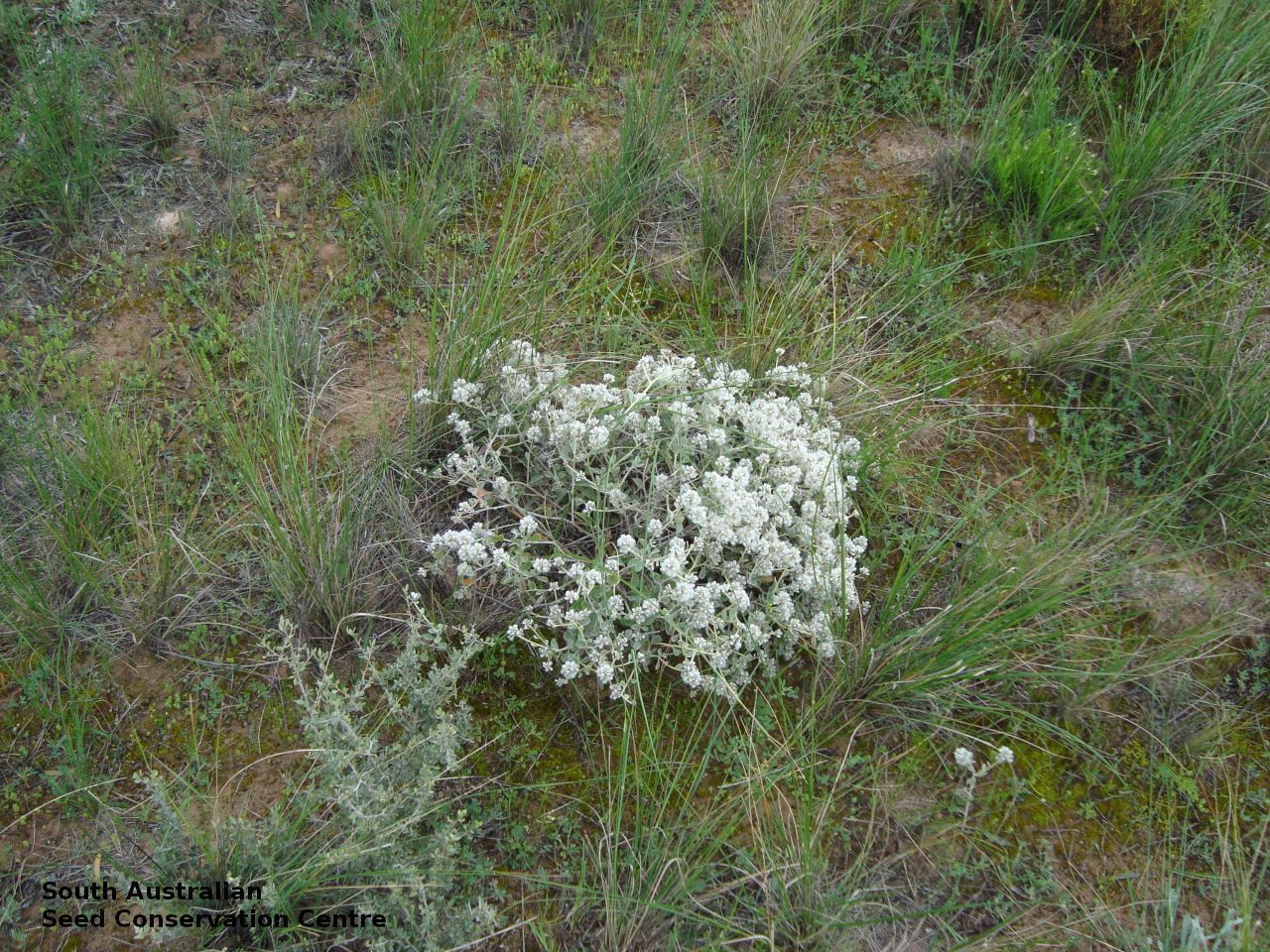
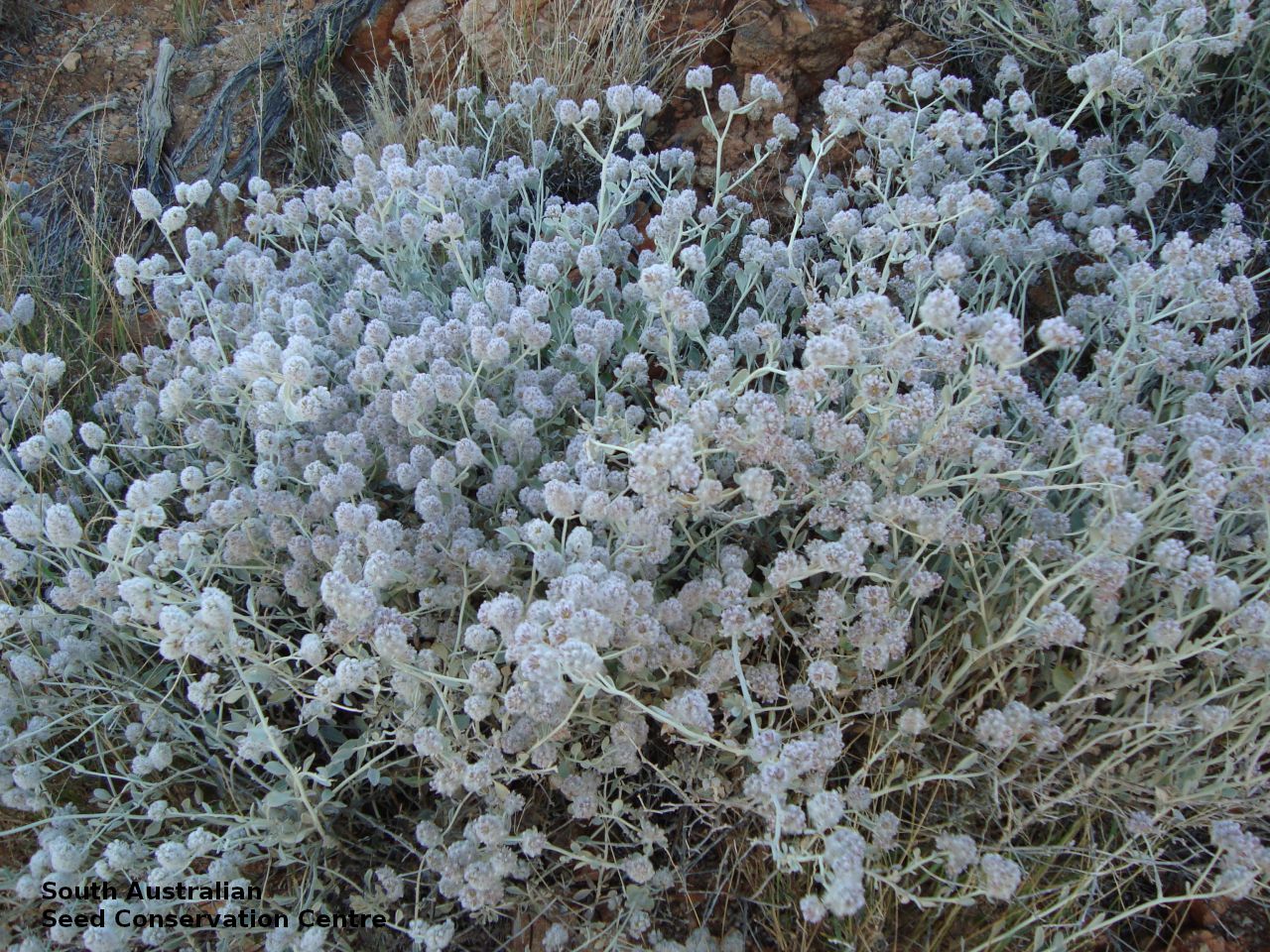
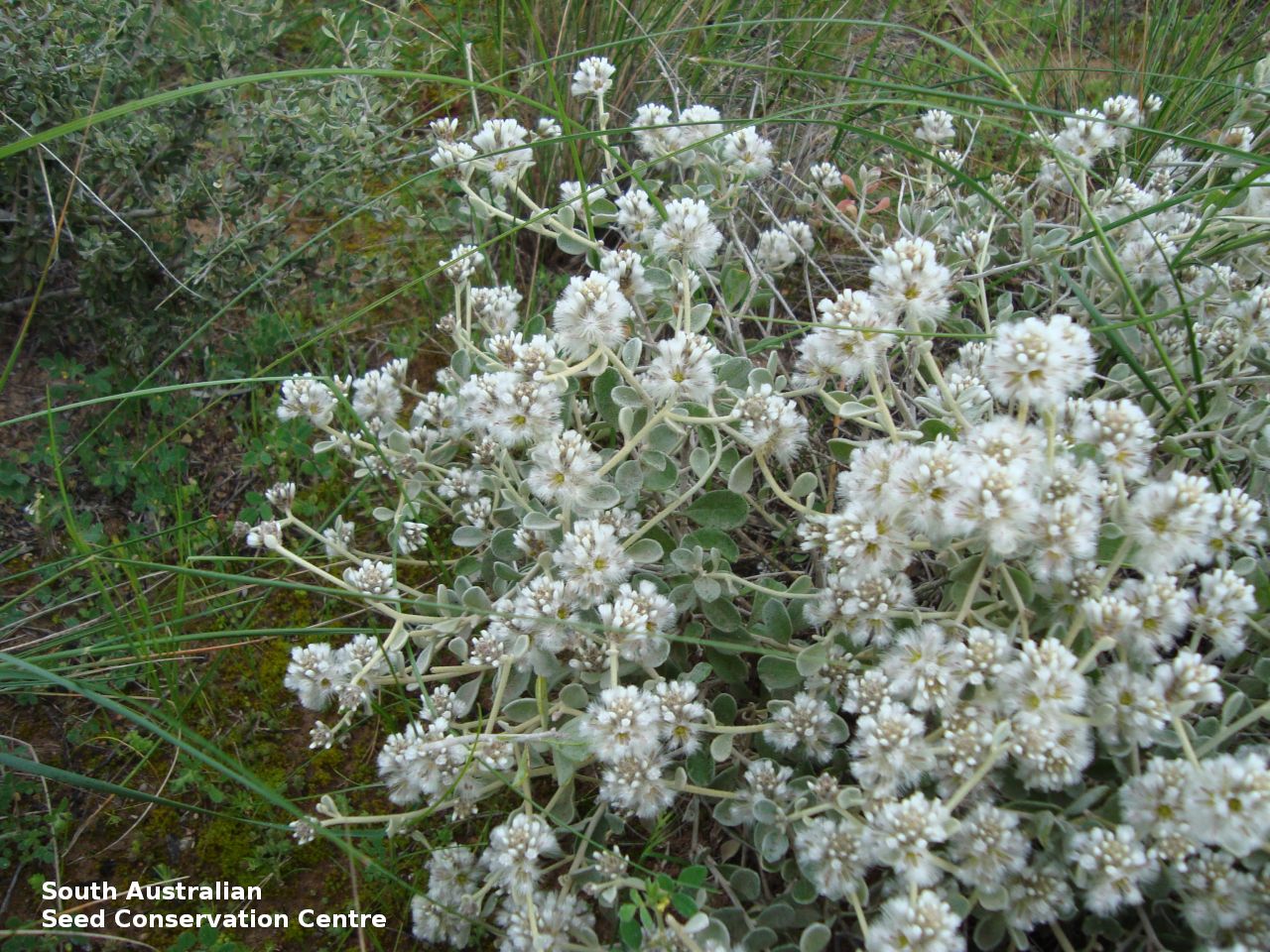
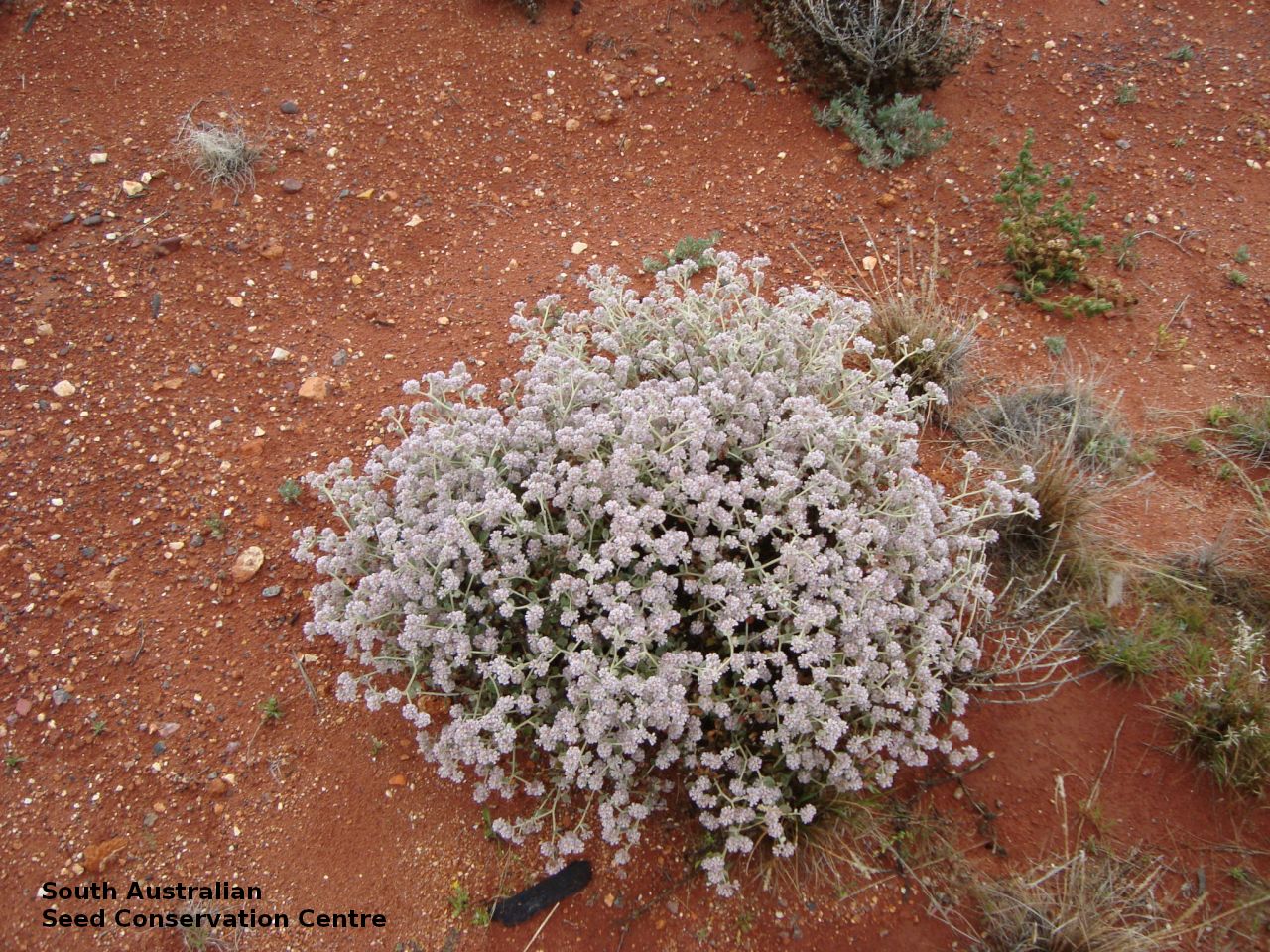
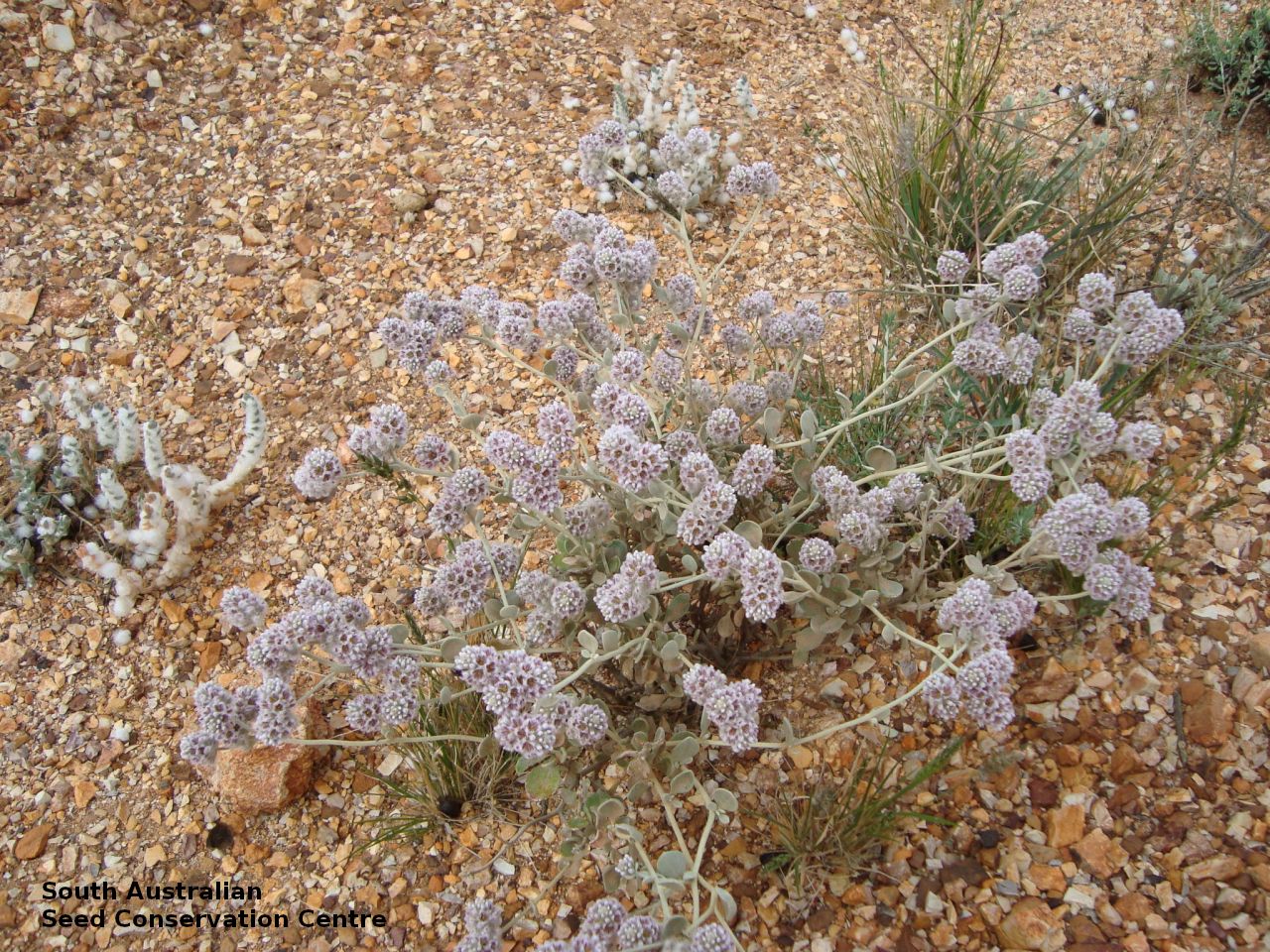
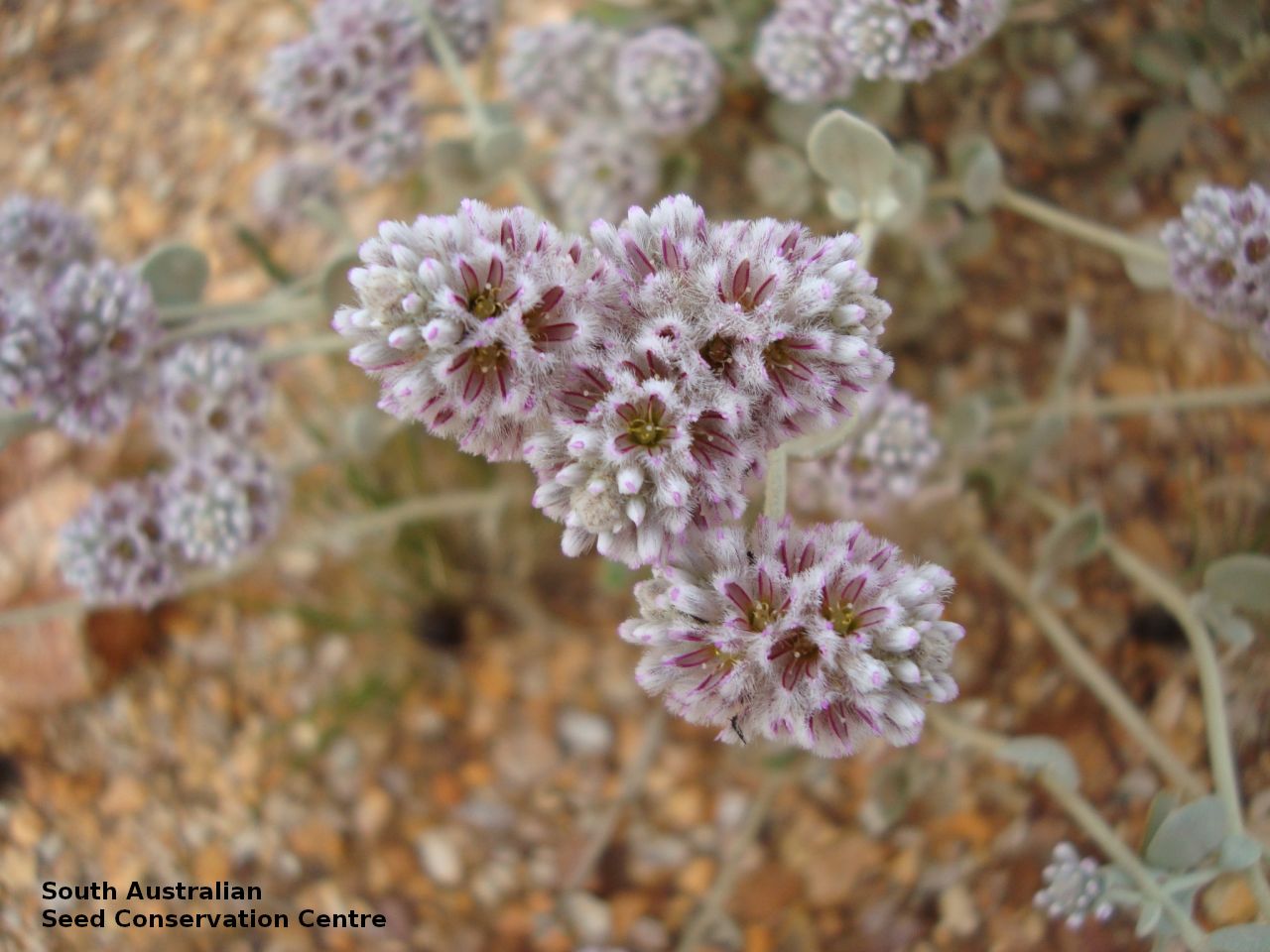
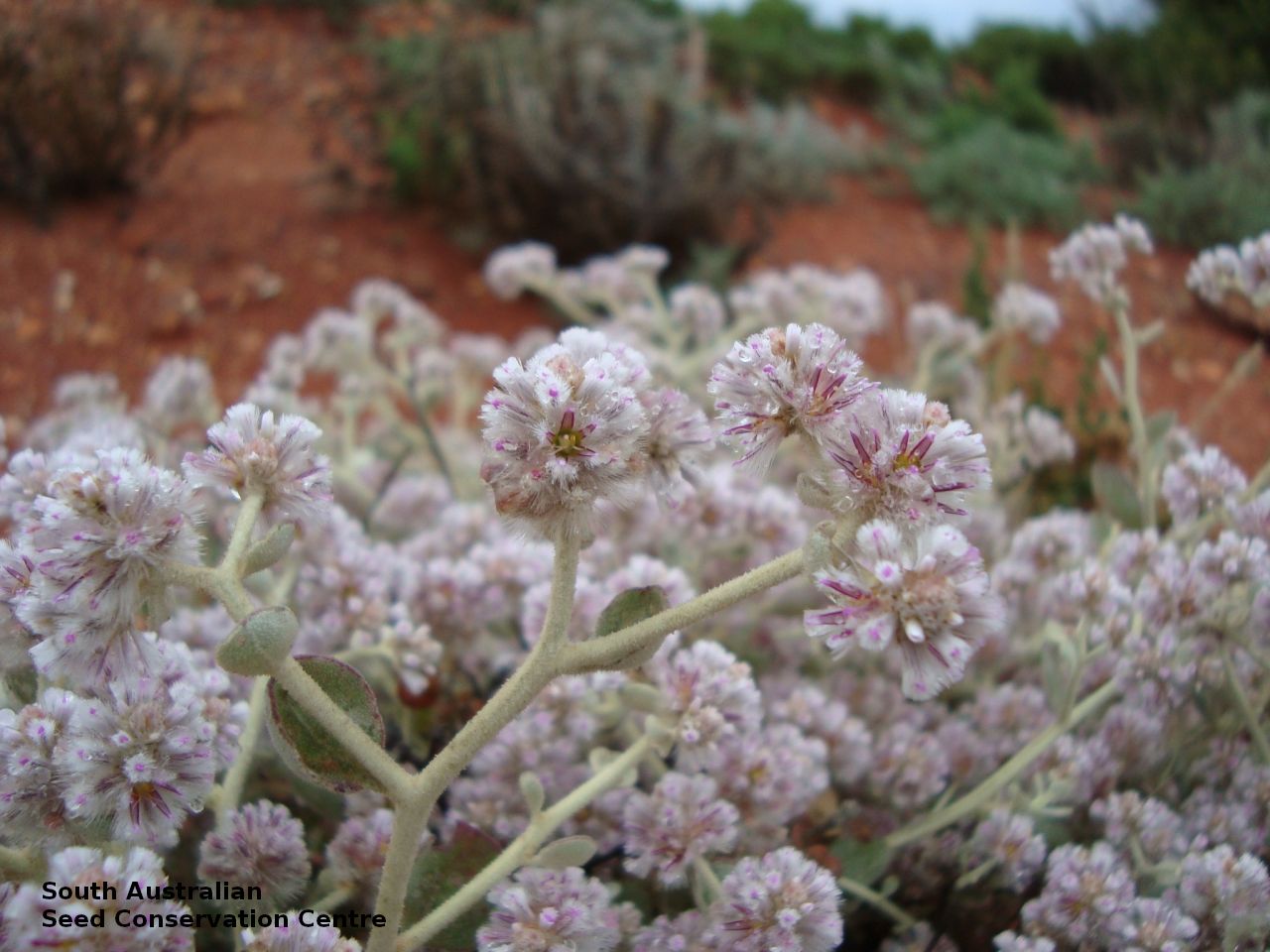
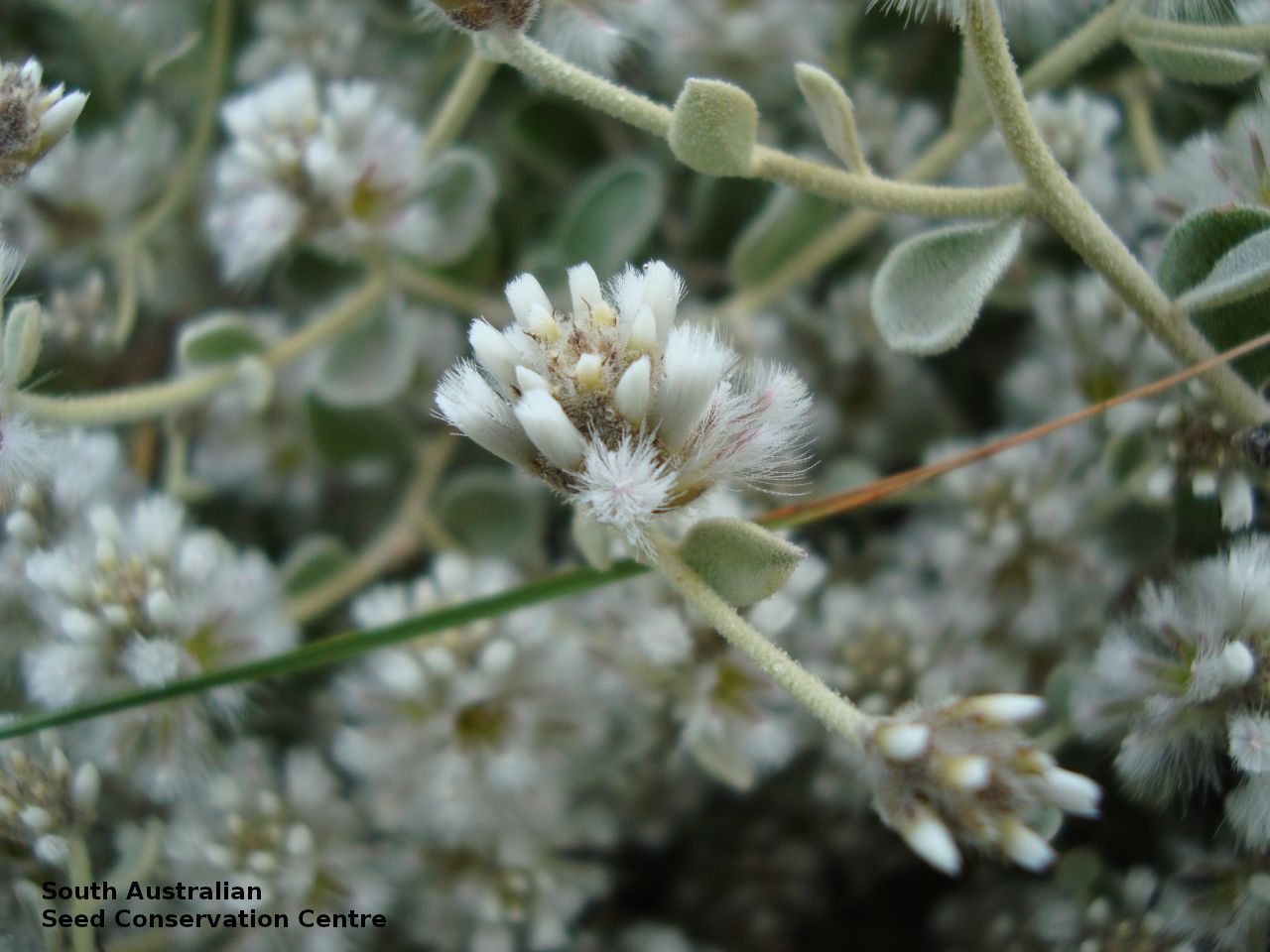
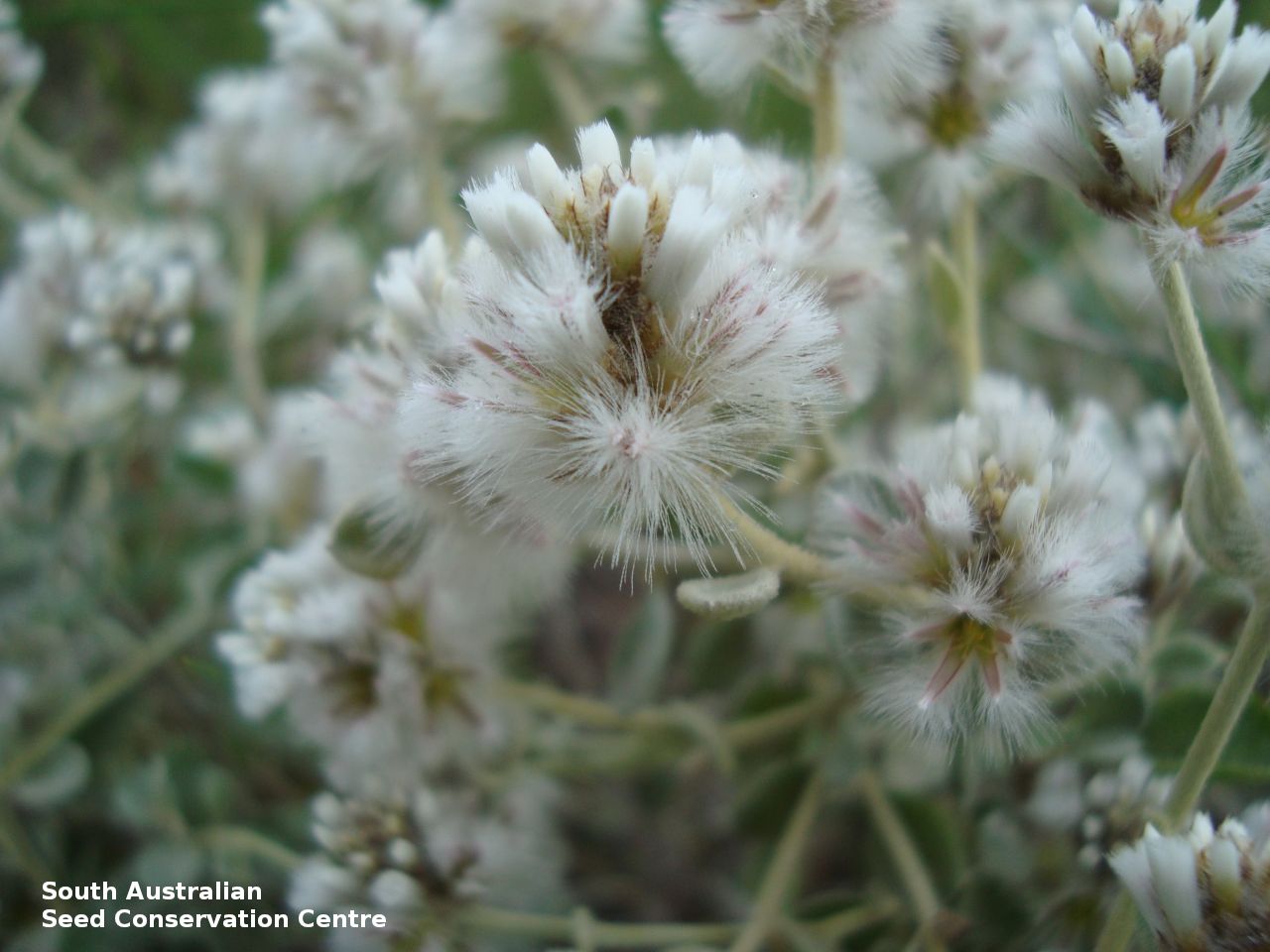

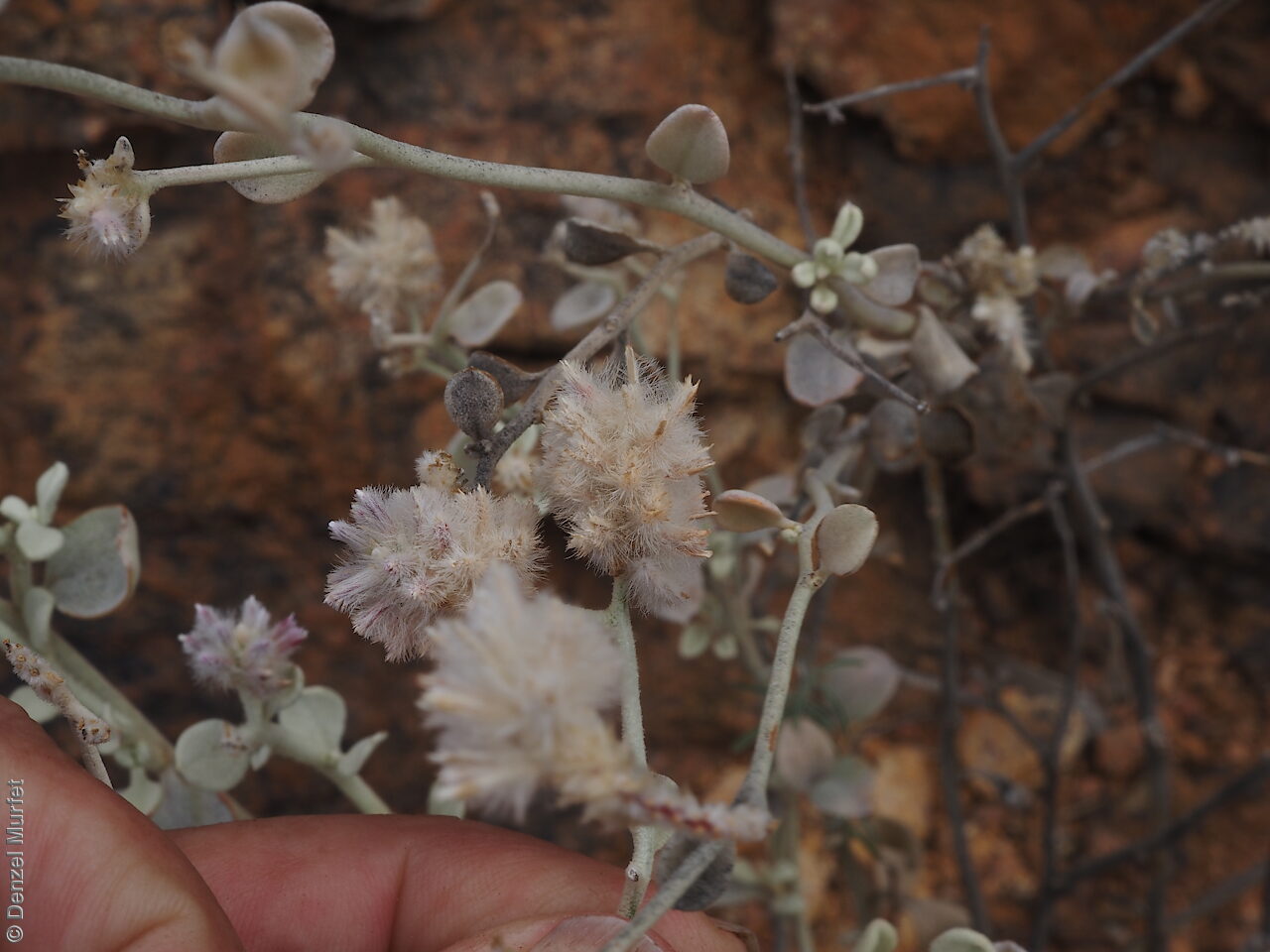
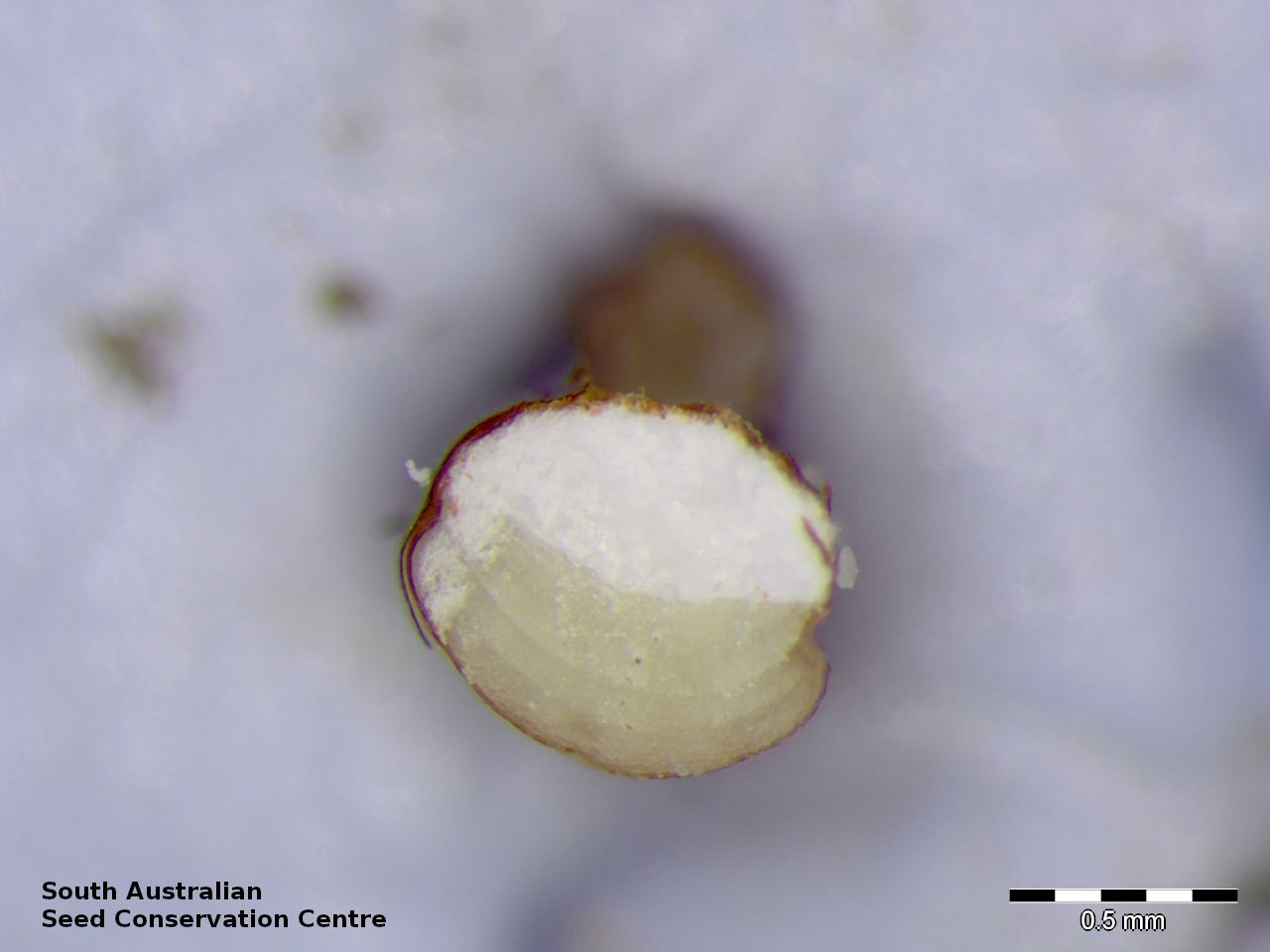


Botanical art
Prior names
Ptilotus astrolasius
Ptilotus astrolasius var. astrolasius
Ptilotus obovatus var. obovatus
Trichinium obovatum
Trichinium variabile
Trichinium lanatum
Common names
Silver-tails
Silver Mulla Mulla
Etymology
Ptilotus from the Greek 'ptilotos' meaning feathered or winged; referring to the hairy flowers. Obovatus from Latin meaning obovate or inverted egg-shaped; referring to leaf.
Distribution and status
Found across the northern and central parts of South Australia, growing in a variety of habitats across drier area. Also found in all mainland states. Native. Common in South Australia. Very rare in Victoria. Common in South Australia.
Herbarium regions: North Western, Lake Eyre, Nullarbor, Gairdner-Torrens, Flinders Ranges, Eastern, Eyre Peninsula, Northern Lofty, Murray
NRM regions: Alinytjara Wilurara, Eyre Peninsula, Northern and Yorke, South Australian Arid Lands, South Australian Murray-Darling Basin
AVH map: SA distribution map (external link)
Plant description
Shrubby roundish perennials to 120 cm across, much-branched from the base or from the top (then forming terminal clusters), intricate branchlets and foliage softly hairy, cream to greyish or greyish-glaucous, stems finally becoming dark-barked. Leaves usually obovate to lanceolate-elliptic, to 6 cm long and 2 cm wide. Flower-spikes hemispherical to oblong and short-cylindrical, to 5 cm long, many on right-angled peduncles, often composed in an irregular clusters, with pink to grey flowers. Fruits are small head containing numerous long papery and hairy fruits, each containing one seed. Seed embryo type is peripheral.
Seed collection and propagation
Be very careful when collecting this species as the fruits contain fine hairs that may cause an allergic reaction for some people. Collect the fruit heads when dried to a pale straw colour. Each fruit should come off the head easily when fingers are rubbed up the stem. Collect more fruits than required as not all fruits will have a viable seed. Be very careful when cleaning this species as the fruits contain fine hairs that may cause an allergic reaction for some people. To clean, rub the fruit heads gently to dislodge the seed at the base of each fruit. Use a sieve to separate the unwanted material. Store the seeds with a desiccant such as dried silica beads or dry rice, in an air tight container in a cool and dry place. Seeds are non-dormant, viable seed should germinate readily.
| Location | No. of seeds (weight grams) | Number of plants | Date collected | Collection number Collection location | Date stored | % Viability | Storage temperature |
|---|---|---|---|---|---|---|---|
| BGA MSB | 2,600 (36.9 g) 2,600 (36.9 g) | 55 | 21-Nov-2003 | MKJ1 Eyre Peninsula | 14-Aug-2006 | 0% | -18°C |
Number of plants: This is the number of plants from which the seeds were collected.
Collection location: The Herbarium of South Australia's region name.
% Viability: Percentage of filled healthy seeds determined by a cut test or x-ray.